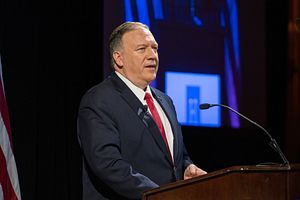Last week, the Trump administration announced that the US will be pulling out of the Open Skies Treaty (OST), a major arms control measure that aided transparency and confidence-building among 34 participating states. In a press statement on May 21, U.S. Secretary of State Mike Pompeo said that the U.S. will send its six-month notice to all the state parties to this effect. Justifying the move, Pompeo said, “Russia has been a serial violator of many of its arms control obligations and commitments,” and not just the OST. The treaty allows member countries to fly unarmed surveillance planes over each other’s territory with a 72-hour notice. The participating states, under the treaty commitments, fly fixed wing planes, equipped with agreed sensors.
The U.S. decision to walk out of the OST comes against the backdrop of the U.S. walking out of the Intermediate-range Nuclear Forces (INF) Treaty in August 2019, and much earlier in 2001, the Anti-Ballistic Missiles (ABM) Treaty. Global arms control arrangements were in a state of disarray in any case and this adds to the problem. While many of the recent developments have been due to Russia’s apparent violation of its commitments, at least as the US maintains, the real reason is more likely the intensifying Sino-U.S. competition and Washington’s determination not to tie its own hands.
Nevertheless, the U.S. does have some complaints about Russian behavior. Washington has cited instances where Russia has breached its OST commitments, particularly on U.S. flights over Russia. Pompeo’s press note last week alleged that Russia had denied permission to U.S. observation flights “within a 10-kilometer corridor along its border with the Russian-occupied Georgian regions of Abkhazia and South Ossetia, thereby attempting to advance false Russian claims that these occupied territories are independent states.” Russia has apparently placed restriction on flight distance over Kaliningrad, and this has been particularly concerning because the enclave has seen significant military build-up in recent years.
Such actions have fueled opposition to the treaty, especially from the right wing of the U.S. political spectrum. In an op-ed in the Washington Post in December 2019, Tom Cotton, a Republican Senator from Arkansas, made a case for the U.S. withdrawal by saying, “Russia has breached the treaty for years by imposing limits on U.S. flights while suffering no such restrictions itself. In other words, “open skies for me, closed skies for thee.”
There were other problems too, because the U.S. fears that Russia has gained an unfair technical advantage under the OST. In 2016, Russia reportedly decided to introduce a new digital electro-optical sensor to its Tupolev Tu-154 aircraft used for Open Skies flights. Both the Pentagon and the U.S. Congress raised alarms over this, though it had more to do with the technological advantage Russia gained rather than being a technical violation of the treaty itself. One senior U.S. intelligence official apparently warned that the introduction of new sophisticated planes over the U.S. would provide Russia with “a significant advantage.” In 2019, Russia introduced the Tu-214ON aircraft OST missions over the United States, raising further concerns.
Russia has its own complaints: Russia’s Foreign Minister Sergey Lavrov has accused the U.S. of imposing “more sweeping restrictions on observation flights over Alaska.” However, the grievances on the U.S. side have been much more intense.
The treaty came about with good intentions. A hearing of the Senate Foreign Relations Committee in September 1992 on the Open Skies Treaty noted that the treaty was not framed as an arms control measure, but as a measure that calls for higher levels of openness and transparency leading to better predictability and stability, thus lessening tensions among the participating states. The initial idea of the OST came from President Dwight Eisenhower in 1955 although it led to nothing since it was rejected by the Soviet Union, which said it was a means for spying. Following the end of the Cold War, in May 1989, U.S. President George H. W. Bush once again broached the idea. After a meeting between NATO and the Warsaw Pact, along with additional negotiations supported by the Organization for Security and Cooperation in Europe (OSCE), the OST was signed in March 1992.
Trump’s decision to withdraw from the treaty could be seen as a prelude to what might happen with regard to another arms control measure that will be up for renewal soon. The bilateral START agreement with Russia ,which puts a cap on the number of deployed nuclear missiles to 1,550 on each side, will come up for renewal in February 2021. Given the recent U.S. attitude toward global arms control measures, it is possible that the U.S. will not renew the agreement.
The Trump administration has demonstrated a keen desire for China to join these arms control arrangements. The feeling appears to be that these various U.S.-Russia treaties serve to limit U.S. ability to compete effectively with China because China is not bound by the same agreements. This was definitely true of the INF treaty. But China has been clear in saying that it has no plans to join any future arms control measure involving the U.S. and Russia.
It is difficult to say what the future of arms control might be given the increasingly contentious nature of major power relations. The Conference on Disarmament (CD) in Geneva has been in a state of limbo for more than two decades and it is unlikely that any serious discussions will happen at the CD in the near future. While the U.S. move does not help matters, it is also yet another indication that the intensifying international competition is shifting to the Indo-Pacific. This means that the U.S. and China will need to engage directly for a new era in arms control.

































